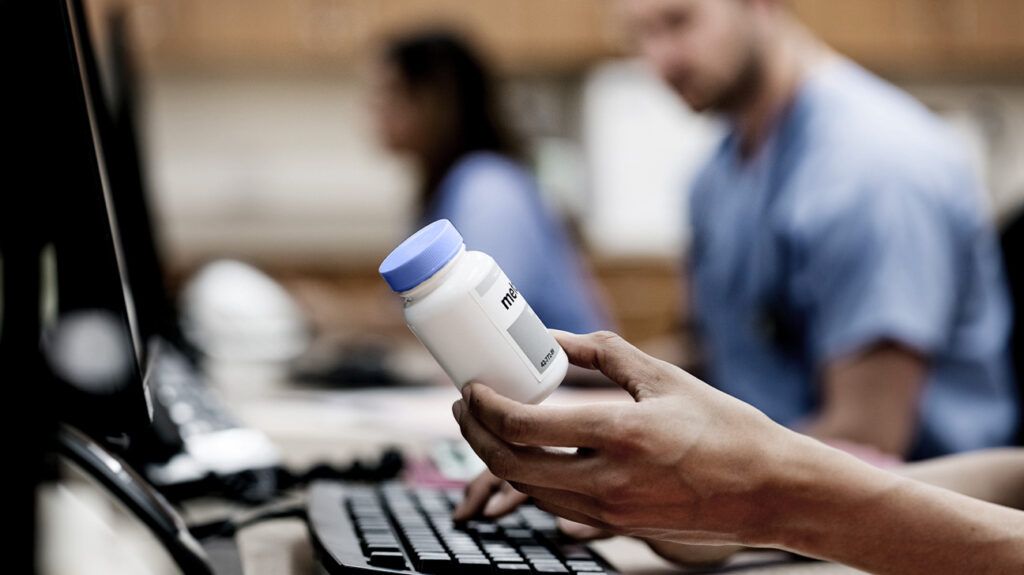If doctors suspect methicillin-resistant Staphylococcus aureus (MRSA) is causing an infection, they will prescribe antibiotics to treat it. Some lab tests can determine the best antibiotic choice. Draining the wound can also help the tissue heal.
MRSA is a type of bacteria that many antibiotics cannot easily kill. However, some antibiotics can treat the infection. Without treatment, an MRSA infection can be life threatening.
Keep reading to learn more about how doctors diagnose and treat MRSA. This article also answers some frequently asked questions on the topic.

To diagnose MRSA, a doctor can order tests to check for the bacteria.
However, doctors
A doctor will order a culture test, which involves taking a sample of tissue or fluid from the affected area and sending it to a laboratory, where specialists check it for MRSA. Results are usually available in a few days.
If the person has a severe illness, a doctor may order other tests, including blood tests or blood cultures.
Additional lab tests, known as
Find out about the differences between MRSA and staph infections.
Doctors treat MRSA with antibiotics. The type and dose of antibiotics may depend on the results of lab tests.
Antibiotics at home
Treatment duration can vary, but a typical course can last
- clindamycin (Cleocin)
- minocycline (Minocin)
- doxycycline (Adoxa)
- trimethoprim-sulfamethoxazole (Bactrim)
A combination of antibiotics may be necessary.
It is important that people always use antibiotics according to a doctor’s instructions and finish the entire course. If a person feels worse while taking antibiotics or suspects the treatment is not working, they should contact their doctor.
Antibiotics in hospital
Some people with MRSA may require a hospital stay and receive intravenous (IV) antibiotics, such as IV vancomycin. Healthcare professionals administer IV medication through a vein.
Most people also require antibiotics for weeks after their hospital stay. This may involve:
- oral antibiotics for the person to take at home
- visits from a home health nurse to the person’s house to administer IV antibiotics
- the person visiting a healthcare facility to receive IV antibiotics
A person may receive the antibiotics at intervals, and doctors will advise how long a person may need to take them for.
Draining the infection
As well as providing antibiotics, a doctor may drain the skin infection or affected area. The draining procedure involves making a small cut in the skin to drain pus and other material.
A person should not attempt to drain the infection themselves.
Reducing the amount of bacteria
Sometimes, people can have MRSA bacteria on their skin and in their nose that does not cause any symptoms. Doctors may refer to a person in this situation as an “MRSA carrier.” A person carrying MRSA without symptoms can still spread the infection.
Doctors may suggest measures to reduce the amount of staphylococcus bacteria on the body when a person has an active infection or is carrying the bacteria. For a period of time, a doctor may suggest:
- showering every day with an antibacterial soap
- using antibiotic ointments on the skin or nose
- using antibiotic pills in some cases
Anyone experiencing MRSA symptoms, such as fever, should contact their doctor.
Learn more about how to prevent MRSA.
Below are answers to some common questions about MRSA.
What is the best treatment for MRSA?
The best treatment for an MRSA infection is antibiotics that the bacteria are not resistant to. This might include trimethoprim-sulfamethoxazole (Bactrim).
It is best for people to always take precautionary measures to prevent MRSA infection. For example, they should wash their hands regularly, especially in areas with high MRSA levels, such as when visiting someone in the hospital.
Can you ever get rid of MRSA?
Antibiotics a doctor prescribes can get rid of MRSA. A doctor may take a sample of the affected area and send it to a lab for tests to determine which antibiotic would be effective at getting rid of MRSA.
Still, a person can get the infection again, especially as MRSA can be challenging to treat.
How contagious is MRSA?
MRSA is contagious. When a person has an active MRSA infection, they are more likely to pass it on to others. This is because their wounds contain many MRSA bacteria.
It is important to cover wounds and wash hands after touching the wound to avoid spreading MRSA to others.
What will happen if MRSA is left untreated?
Without treatment, MRSA can cause serious complications. It can even be
Complications of MRSA can include sepsis, surgical site infections, blood infections, and pneumonia.
MRSA can be life threatening without treatment. Diagnosis involves sending samples of tissue or fluid to a lab. Tests can confirm the bacteria is present and determine which antibiotic is suitable to treat the infection.
A doctor may also recommend draining the wound to help the body heal or taking certain measures, such as showering daily with an antibacterial soap, to reduce the amount of bacteria on the skin.


